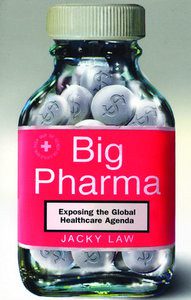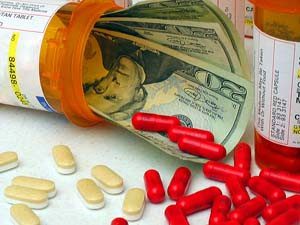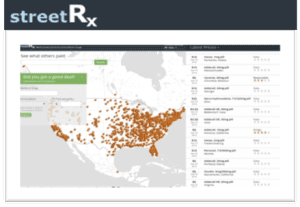NIMBY – Not In My Back Yard – is the rallying cry heard from many politicians and citizens when asked if there is a drug problem in their neighborhood or if they would welcome a drug treatment facility. “Sure, maybe we have a problem, but it’s not that bad” or “it’s really worse in the next neighborhood over”, or “the next town over” or “the next state over.” Baloney – it’s in all of our yards and is as prevalent as the ragweed that grows in all of our lawns! It does not matter if we live in the city, suburbia, the Northeast Kingdom of Vermont, Downeast Maine or in the farmlands of America – it is truly everywhere!
To truly understand the magnitude of this problem we need to examine the economic impact of addiction to society. There have been reports that when one considers the cost of drug use related to law enforcement, crime, judicial costs, incarceration, emergency room visits, hospitalizations, lost worker productivity, and workers compensation; not to mention the deterioration of societal priorities or the overall risk to the public in terms of spread of disease (Hepatitis C & HIV) or secondary health and safety consequences such as domestic abuse or childhood asthma … the overall national annual cost exceeds 400 Billion Dollars. Moreover, as an example, to treat one heroin addict in an outpatient medication based treatment center with admission and yearly annual exams, laboratory screening for HIV and Hepatitis C, group and/or individual counseling on a regular basis, and frequent random drug testing, the cost for this patient is approximately $3,000 - $5,000 per year. Halfway houses can cost $20,000 or more per year and incarceration of this patient costs upwards of $50,000 per year. And even if one wants to ignore the scientific evidence that treating a heroin or “Oxy” opiate addict with a replacement medication such as methadone or buprenorphine is not simply trading one addiction for another, one cannot deny the documented fact that patients who enter into this type of treatment have an approximate tenfold decrease in criminal activity.
State legislators, our local politicians and our neighbors need to look critically at the facts and not adopt a NIMBY approach to drug addiction that is ruining lives and stealing our tax dollars by inadequately treating and preventing this epidemic from expanding. Heroin deaths are rising each year and one of the fastest segments of society developing dependency on opiates and heroin are suburban women in their 20’s and 30’s. The disease of addiction is in all of our back yards!
Drug addiction, including heroin abuse, is an equal opportunity disease affecting all socioeconomic strata; and knows no boundaries. This is not a problem of the welfare state or the poor or less fortunate. It is NOT NIMBY!! The disease is present in our impoverished neighborhoods as well as our wealthy suburban communities and in our resort towns and rural areas. Establishing treatment centers for addiction in one’s own locale should be worn as a badge of honor, no different than establishing a cancer treatment center or cardiac center; both of which are illnesses that may be related to the disease of addiction. NIMBY no longer works!
Please enjoy this week’s excerpt from Addiction on Trial. Police Chief François Bergeron is keenly aware that disease of addiction is all around us!
The Chief was perturbed that Annette’s death and some of the circumstances were leaked within minutes, not hours. He had already received calls from the local TV stations. Bergeron did not welcome the added pressure created by the dramatic news reports of a murder with blood splattered all over the deceased’s car and the primary suspect from away in jail for heroin and cocaine possession…
Although Chief Bergeron had witnessed first-hand the increasing influx of drugs into not only his community but into all of Downeast Maine, Annette's death and the likelihood it was drug connected posed challenges never before encountered. Although the chief understood that drug addiction was a complicated topic and a burgeoning problem, this view was not shared by most, many of whom even refused to believe that Downeast Maine had a significant drug issue despite the fact that a methadone treatment center about two hours away had recently opened to treat the epidemic of heroin and Oxycontin addiction in the region. There had been a prolonged battle within the ranks of city government and among the citizens who irrationally opposed the siting of the treatment center, delaying its opening for years. Eventually, there was some acknowledgment that Downeast Maine, no different than innumerable regions and communities up and down the east coast, had a heroin and Oxycontin problem, but it was greatly minimized. The clinic was finally approved after much rancor, but treatment was initially limited to one hundred patients. Since no one ever wants to believe its municipality has a significant drug problem, it was decided that opening up one hundred outpatient slots would more than satisfy the need and help to quell the escalating controversy. The clinic filled all its patient slots within a month and droves of needy patients were placed on waiting lists.
This struggle to establish treatment centers was not unique. There were similar controversial and heated discussions in many cities and towns throughout New England. Lawsuits between municipalities against well-intentioned medical providers were not unusual. Paradoxically, at about the same time, a New England Governor’s Council Forum had convened at the old City Hall near the waterfront at Faneuil Hall in Boston. Presentations by illustrious speakers demonstrated the extent of the epidemic. New England had a significantly higher heroin use rate than the rest of the country. Portland, Maine, and the Massachusetts cities of Boston and New Bedford were primary ports used for smuggling. Chief Bergeron had attended this forum as a member of Maine’s Drug Task Force Committee. What Bergeron remembers most from the conference was the statement by a prominent elected official that “these are telling times when elementary and middle school children are offered a bag of 70-80 percent pure heroin for the price of a double scoop ice cream cone.” The forum’s mantra was interdiction, education, and treatment. This battle cry was good in theory, but in practice it was a different story at the local level. NIMBY—“Not In My Back Yard”—was the rallying cry of most municipalities. No town would admit to having a significant drug issue; it was always the next town over that had the problem. The rationale was based on the fear that if a drug addiction center was established in one’s own town, which of course did not have a problem to begin with, all the addicts from the neighboring townships would spread the scourge as they migrated for treatment, thereby creating a drug problem that never before existed. Despite the documented epidemic of drug abuse across the nation, hardly any individual town, if you spoke to the locals, had much of a problem.
Chief Bergeron understood the apprehension of the townsfolk, that a drug treatment center in West Haven Harbor would label the town as a drug haven. The tourists would be frightened and stay away, the local economy would falter, and everyone would suffer. As a result, many in need of treatment never got it. Chief Bergeron’s concern for the lack of treatment options was now a secondary issue. He recognized that the townsfolk's anger directed at an addict from away was irrational, especially before all the facts were known, but he also understood their desire for retribution for Annette's murder.






